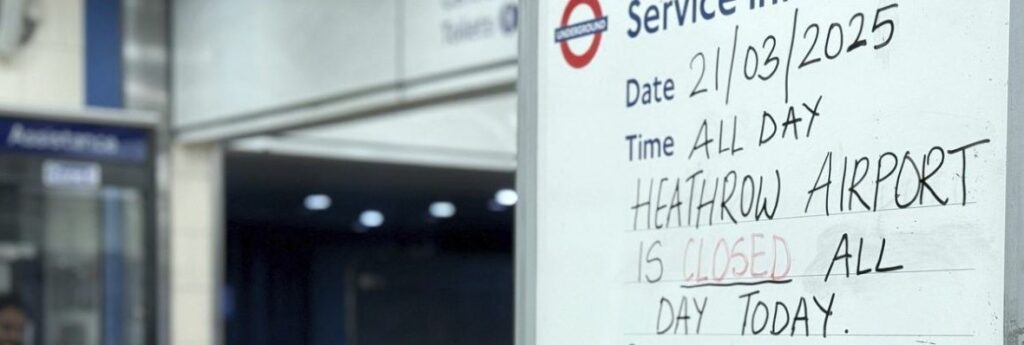London Heathrow Airport said it was “fully operational” on Saturday, after an almost daylong closure sparked by an electrical substation fire. But thousands of passengers remained stuck, and airlines warned that severe disruption will last for days as they scramble to relocate planes and crews and get travellers to their destinations.
Friday’s travel mayhem occurred after an overnight fire at a substation 3.2 km. away from the airport cut power to Heathrow, resulting in more than 1,300 flights cancelled and some 200,000 people stranded Friday.
“This is a huge embarrassment for Heathrow airport. It’s a huge embarrassment for the country that a fire in one electricity substation can have such a devastating effect,” said Toby Harris, a Labour Party politician who heads the National Preparedness Commission, a group that campaigns to improve resilience.
Heathrow said it had “hundreds of additional colleagues on hand in our terminals” and added flights to facilitate an extra 10,000 passengers.
British Airways, Heathrow’s biggest airline, said it expected to operate about 85% of its 600 scheduled flights at the airport on Saturday. It said that “to recover an operation of our size after such a significant incident is extremely complex.”
Several arriving and departing flights between cities across Canada and LHR were affected. As of early Friday, Toronto’s Pearson airport listed at least five scheduled arriving flights from Heathrow as cancelled, as well as two departing flights. Airports in Vancouver and Montreal also listed multiple cancelled flights.
Air Canada said Friday that six of its flights on Thursday were diverted mid-air while a seventh was cancelled before departing. Those flights included some from routes through Toronto, Montreal and Calgary.
The airline said early Friday it had cancelled 16 flights in total, including return flights from London. In a later update, Air Canada said it planned to operate its regular schedule of flights starting Friday evening after flights resumed at Heathrow.
Air Canada previously said it rerouted some customers to other European gateways and was helping passengers bound for London to change their travel plans.
WestJet said in a statement that two of its flights between Calgary’s international airport and Heathrow were cancelled Thursday and Friday.
Residents in west London described hearing a large explosion and then seeing a fireball and clouds of smoke when the blaze ripped through the substation. The fire was brought under control after seven hours, but the airport was shut for almost 18. A handful of flights took off and landed late Friday.
Police said they do not consider the fire suspicious, and the London Fire Brigade said its investigation would focus on the electrical distribution equipment at the substation.
Heathrow chief executive Thomas Woldbye said he was “proud” of the way airport and airline staff had responded. “Remember, the situation was not created at Heathrow Airport,” he told the BBC. “The airport didn’t shut for days. We shut for hours.”
He said Heathrow’s backup power supply, designed for emergencies, worked as expected, but it wasn’t enough to run the whole airport, which uses as much energy as a small city.
“That’s how most airports operate,” said Woldbye, who insisted “the same would happen in other airports” faced with a similar blaze.
Heathrow is one of the world’s busiest airports for international travel, and saw 83.9 million passengers last year.
Friday’s disruption was one of the most serious since the 2010 eruption of Iceland’s
Eyjafjallajokull volcano, which shut Europe’s airspace for days.
Passengers on about 120 flights were in the air when Friday’s closure was announced and found themselves landing in different cities, and even different countries.
If this article was shared with you by a friend or colleague, you may enjoy receiving your own copy of Travel Industry Today with the latest travel news and reviews each weekday morning. It’s absolutely free – just CLICK HERE.

